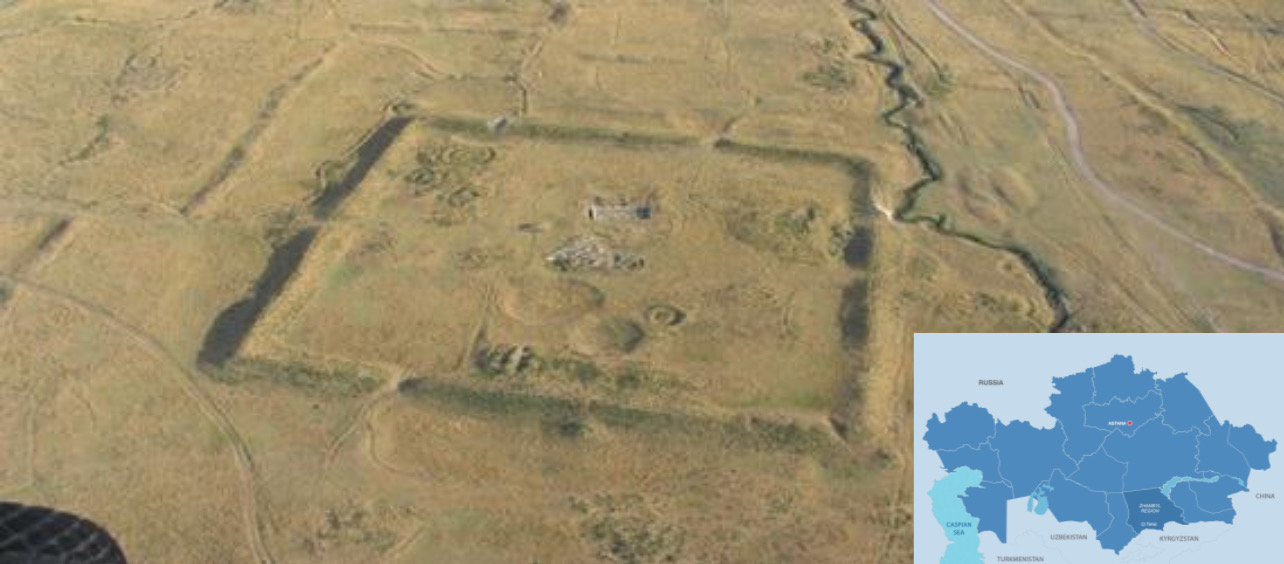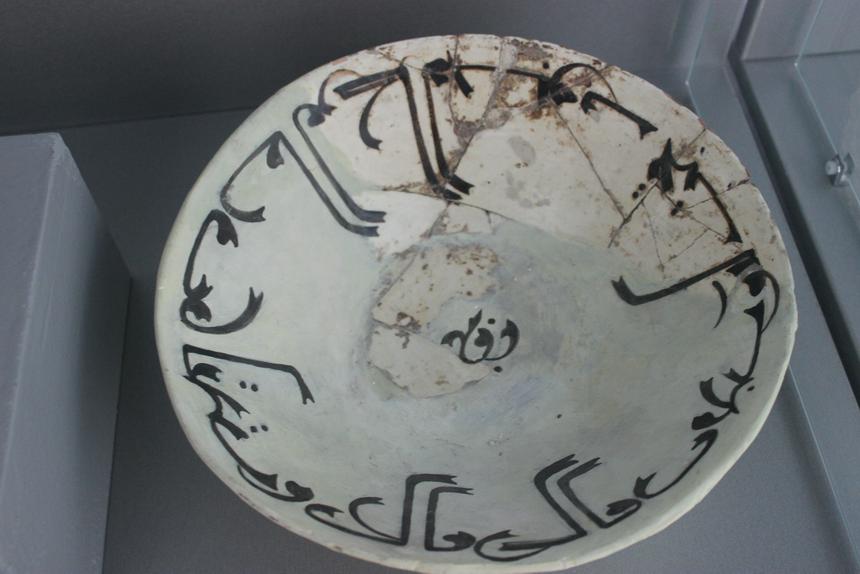ASTANA – Echoes of history reverberate through the Zhambyl Region, where 116 settlements stand as witnesses to the past. Among these, the city of Taraz, with its two-millennial history and ties to the Great Silk Road, is flanked by more than 30 satellite castles of great significance. One such site that has historians and archaeologists captivated is the ancient settlement of Ornek, writes Kazinform.

Photo credit: Zhambyl Regional Museum of Local History. Click to see the map in full size. The map is designed by The Astana Times.
In May 2014, the United Nations Educational, Scientific and Cultural Organization (UNESCO) recognized the significance of 33 Kazakh monuments, designating them as Monuments of the Silk Road: Tien-Shan Corridor. Among these historical wonders, five are located in Zhambyl, with Ornek taking the spotlight.
Guided by renowned Kazakh archaeologist Karl Baipakov, excavations during the 1980s revealed a treasure trove of artifacts, offering clues to Ornek’s illustrious past.
“Baipakov suggested that Ornek may be a Kulshoub, a medieval city, which is mentioned in the works of 9th-century Arab geographers. Kulshoub was owned by large Karluk landowners. The artifacts that were found in excavations that took place in the 2000s indicate that in the 10th century, on the territory of the spring-autumn pastures of one of the tribes, there was a bid of the Karluk ruler on the site of a permanent settlement. Later, under the influence of trade logistics of the Great Silk Road, it became the core around which the city was built,” said historian and archaeologist Galiya Alimzhanova.

Photo credit: Zhambyl Regional Museum of Local History.
Ornek’s allure lies in its formidable fortifications, with well-preserved walls and earthworks that highlight its strategic importance. The quadrangular hillfort, positioned to align with the cardinal directions, is a remarkable feat of ancient engineering. Standing at a towering five meters high, the embankment still stands tall as a silent sentinel of its glorious past.
Evidence of a mosque supposedly dating back to the 10th century has surfaced, along with a residential house spanning more than 50 square meters, providing a rare glimpse into the lives of its inhabitants. Inside the dwelling, an array of ceramics and glass products were found, their age expertly determined to be from the 10th to 13th centuries, which further bolsters the city’s rich historical tapestry.
The archaeologists have also found mausoleums for collective burials. In the lower layer under the mausoleum was a workshop for the manufacture of ceramics, as evidenced by the large number of broken household ceramics found under the mausoleum. These remarkable discoveries offer an intimate look into the daily lives and funerary practices of Ornek’s ancient inhabitants.
The archaeological excavations at Ornek have unveiled a fascinating array of artifacts, shedding light on its vibrant urban culture and thriving trade relations. Among the discoveries are ceramics and glassware originating from China, Byzantium, Iran, Bukhara, Samarkand and Kokand, showcasing the cosmopolitan nature of this ancient city. Coins have surfaced from various periods, including the Turkish and Karluk Hagans eras, attesting to Ornek’s bustling economic activity and trade links along the Silk Road.

Photo credit: Zhambyl Regional Museum of Local History.
“The central part of Ornek features a distinct quadrangular platform with an almost square shape, oriented vertically to align with the cardinal directions. At the corners and along the perimeter of the walls, small hills can be observed, marking the locations where towers once stood. Inside the walls, on the hillside’s surface, one can see small oval bumps, while at the center, there are three interconnected round pits forming water bodies. The diameter of one pit measures 15 meters, while the other two are 30 meters in size. Such cities were often established along the caravan tracks, eventually evolving into thriving hubs of crafts and trade. They were strategically positioned near rulers’ domains, in fertile valleys, and at convenient locations. During the excavations, archaeologists made remarkable discoveries, shedding light on the city’s rich history. Remnants of artisan workshops and imposing fortifications hint at the presence of a powerful nomadic ruler. Alongside these, a mosque, a mausoleum, barracks-like structures, residential houses, and a Muslim necropolis came to light, painting a vivid picture of life in ancient Ornek,” said Alimzhanova.
The Talas Oasis provided a nurturing environment for the city to thrive economically and strategically, and it was closely tied to the city of Taraz, making it a significant and prosperous urban settlement for its time.
The historic Ornek, draped in the allure of the Silk Road, continues to fascinate historians and archaeologists, as it unravels its secrets one layer at a time. As each artifact emerges from the dust of time, it paints a vivid picture of an ancient oasis that once thrived along the legendary trade routes of the world.

